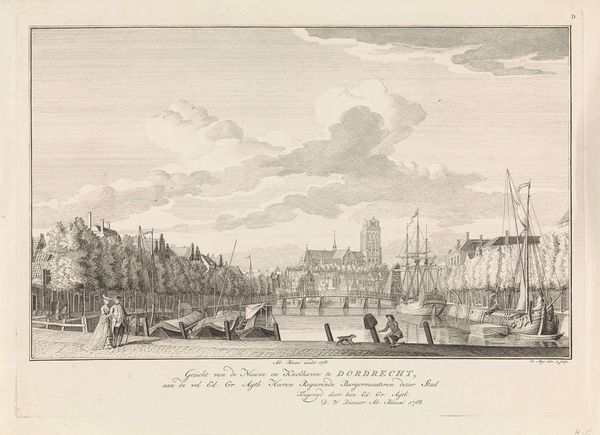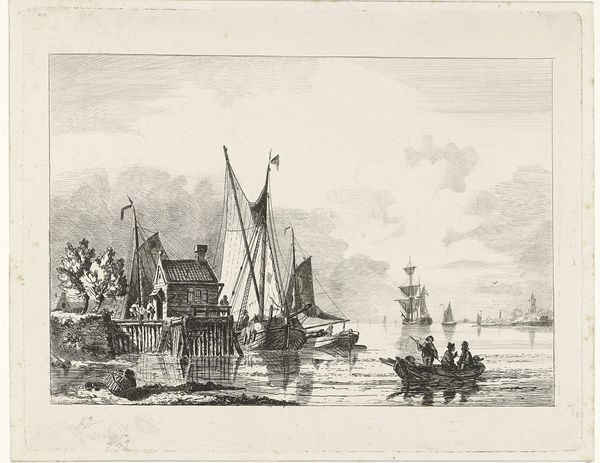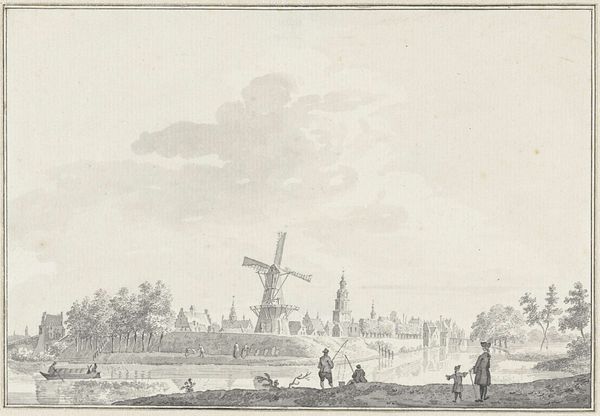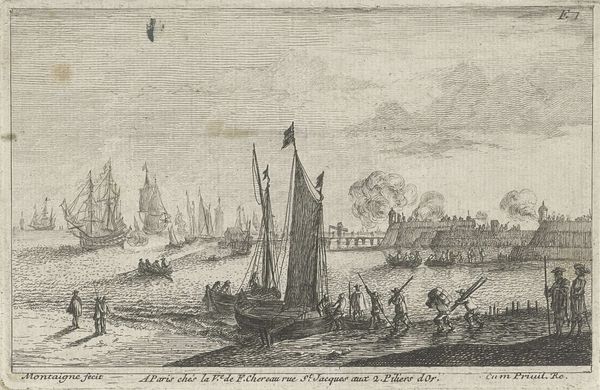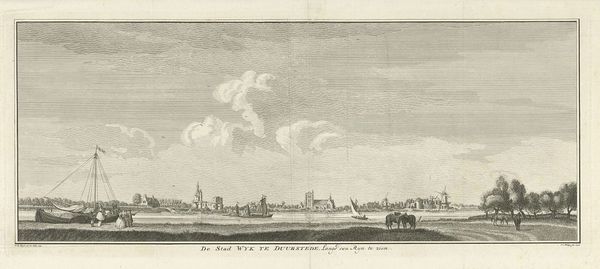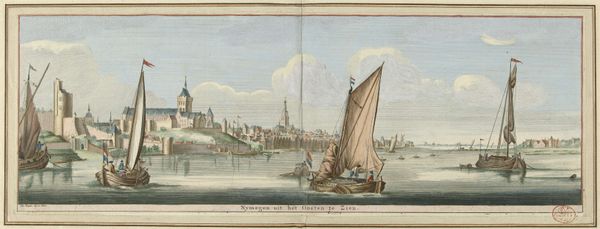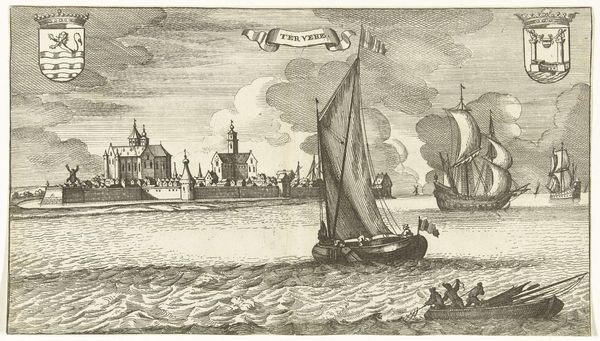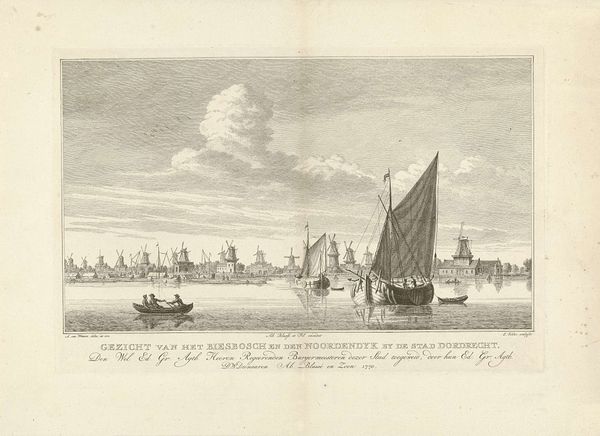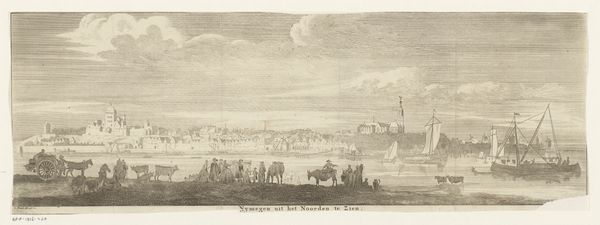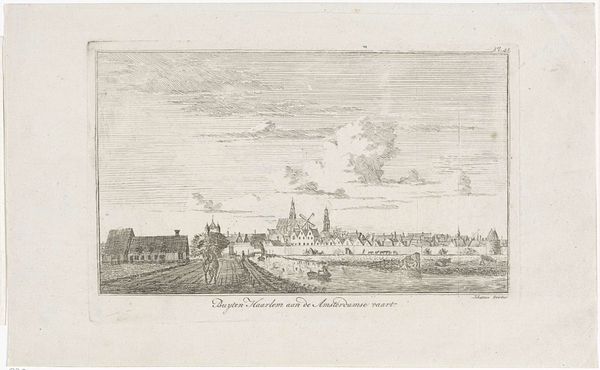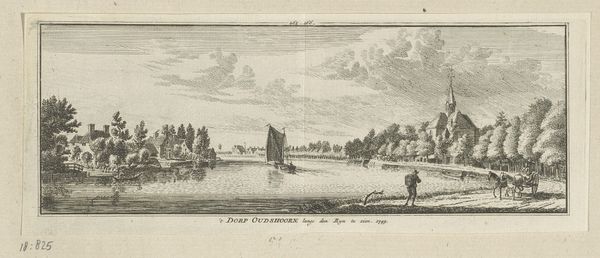
print, engraving
baroque
dutch-golden-age
pencil sketch
landscape
cityscape
engraving
Dimensions: height 146 mm, width 423 mm
Copyright: Rijks Museum: Open Domain
Editor: This is "Gezicht op Nijmegen vanuit het oosten," a cityscape made by Jan Ruyter, sometime between 1726 and 1744, using engraving. It has a quiet, almost melancholic feel, perhaps from the muted tones. What stands out to you? Curator: The perspective offered in this engraving is particularly interesting when we consider the socio-political landscape of the Dutch Golden Age. How do you read the relationship between the city depicted and the waterways? Is it merely scenic, or might there be something more to unpack? Editor: I see how the river is so prominent, it’s like the city's lifeblood. It makes me wonder, was this artist perhaps commenting on trade and the importance of water for Nijmegen’s prosperity? Curator: Precisely! Waterways were crucial for commerce and defense. But beyond that, I think Ruyter subtly critiques the unequal distribution of wealth within these booming port cities. Do you see how some ships seem grand while others are smaller and less ornate? Who benefited most from that "prosperity?" Editor: That's a powerful observation; I hadn’t considered it from that angle. So the print becomes more than just a view; it’s a historical document that raises questions about social justice and economic disparity. Curator: Indeed. It challenges us to think critically about the narratives of progress we often encounter and to consider whose voices might be missing. Now, reflecting on that, how does it alter your initial impression? Editor: I see it as a starting point, not an end point. I realize there are deeper, often unsettling layers beneath the surface that connect to the city's story. Thanks, I hadn’t quite grasped the social implications woven within this serene depiction. Curator: And that’s the joy of engaging with art history – uncovering those hidden dialogues with the past.
Comments
No comments
Be the first to comment and join the conversation on the ultimate creative platform.
